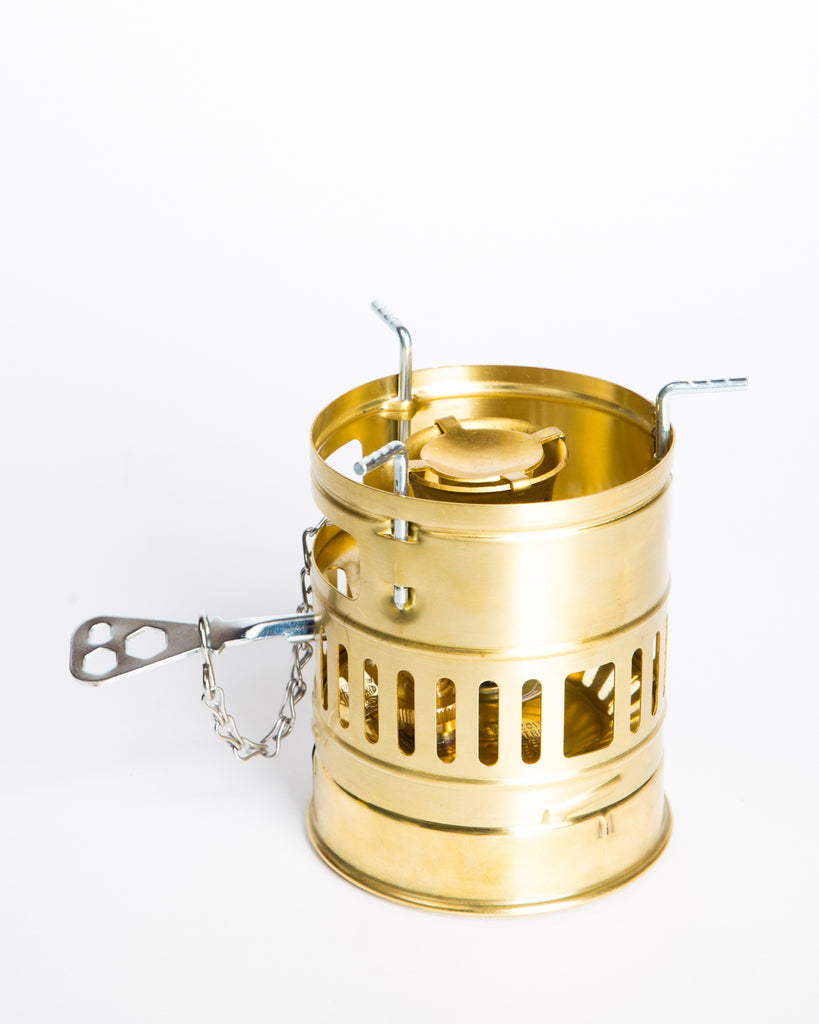Optimus Svea: Prime Swedish Camp Stoves That Won't Quit
Posted on 09 July 2015

In outdoor gear the meaning of "good design" depends heavily on the needs of the user. However, when a tool has been field tested around the world for over 60 years without needing an overhaul, the quality of its design feels a hell of a lot more objective. The Svea 123 is a camp stove that debuted in 1955, produced by Optimus, a Swedish company with a hand in the stuff-burning game since the 1800s.
The Svea is widely regarded as the world's first "ultralight" camp stove, coming in at just 1.2 pounds (or 19.3 oz), and standing around 4 in. wide by 5 in. tall. Materials have gotten lighter and fancier since 1955, but the genius simplicity of the burner design and stable all-brass construction make this golden can a modern contender among even serious climbers and long distance hikers. It can boil a liter of water in under 7 minutes, simmer subtly when you need it to, run close to an hour on high, weather altitude and unpredictable conditions reliably, and take a hell of a beating.
That ruggedness is a key reason it has maintained popularity—a lucky garage sale goer can still score a used Svea 123R from the '60s in perfect working order. However, the brilliance of the design is in its interesting use of liquid fuel pressurized by heat priming, and released via a simple well protected burner. Particularly ahead of the curve in '55, liquid white gas is still a favorite fuel for outdoor use. It burns hot, efficiently and clean, and using liquid fuels can reduce a lot of the unfortunate waste (and weight) associated with fuel tanks and packaging.

But instead of using a pre-pressurized canister or pumped tank, this little stove boldly requires that you set its exterior on fire to bring the fuel up to pressure. Just drip a little fuel into the top cup of the burner and into the well formed in the top of the fuel tank, let it flame up dramatically to heat the tank, and, when the time is right, turn on the feed to release the now-vaporized fuel. It's technology from an era when kids brought BB guns to school and we all knew how to start campfires without using lighter fluid or needing to Instagram it. But I'm not just being nostalgic. The hands-on nature of the Svea doesn't make it any harder to use, and it gives the user more control and responsibility than most of us are used to. In return we get a stove that will probably outlive us.
They're also entirely rebuildable, and parts are easy to come by since only slight changes have been made over the years. The biggest update since the '50s is visually tiny, but totally awesome: rather than coming with a separate loseable tool to clean the burner's jet, the 123R has a self-cleaner built in. Just turn the fuel key all the way to the left and it clears the jet with a tiny internal needle. No extra external parts, everything fits within the original burner design. And that same fuel key is the only tool needed to take the stove apart! It's lovely engineering.

The burner isn't especially quiet, and the object itself looks like a conspiracy theorist's radio jammer, but it's one of the most reliable and rugged stoves we've ever used. Vintage design doesn't always mean nostalgic—these things are awesome.
The Svea 123R's cult following continues to grow, and Optimus has branched out in other directions as well. For a more substantial camp stove, the Hiker+ offers a larger unit with a built-in priming pump (no self-immolation required) with a steel case so tough you can jump on it! Check out the Optimus offerings at Hand-Eye Supply.